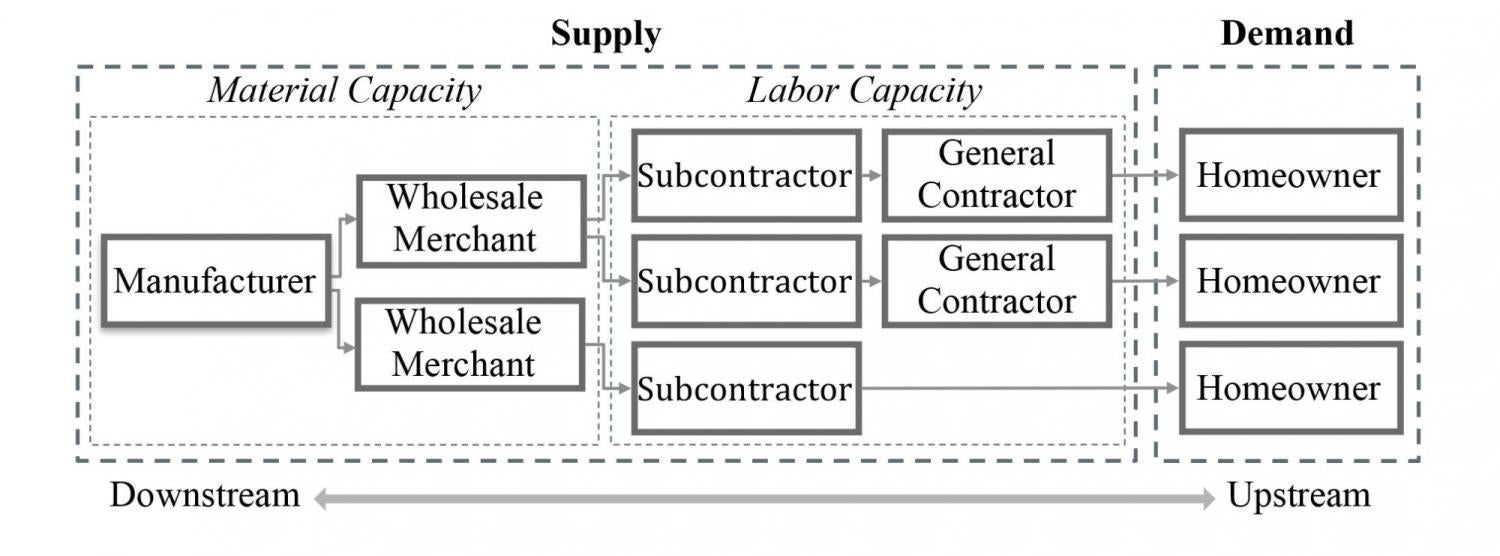Construction Capacity: Regional Construction Supply Chains and Disruptions
Summary
This seeks to measure the capacity of the U.S. construction industry, to improve how construction organizations coordinate labor and material resources in the wake of disruptive events. The U.S. construction industry is susceptible to disruptions of normal operating conditions, such as labor shortages, disasters, migration, terrorism, and economic fluctuations. A lack of existing labor and material resource availability leads to decreased capacity within the construction industry, often resulting in delayed project schedules and inflated material prices. Building upon organizational and supply chain management theories, our research team has examined how organizations within construction supply chains facilitate the flow of goods and services to meet fluctuating demand. Using qualitative and quantitative methods, we have analyzed how construction industry capacity varies significantly between U.S. regions and determines if regional supply chains can meet unanticipated demand surge.
Regional construction supply chains play an important role in providing needed building material and labor resources within the U.S. construction industry. However, regional construction supply chains are also vulnerable to disruptive events, which often strain existing regional construction industry capacity. Regional construction capacity is defined for the first time in this research as the ‘maximum building volume a regional construction industry can supply in a set timeframe due to regional supply chain resources.’
Funding
Department of Education Graduate Assistantship in Areas of National Need (GAANN) Fellowship
College of Engineering and Applied Science Dean’s Graduate Assistantship
Department of Civil, Environmental, and Architectural Engineering Doctoral Assistantship for Excellence
Research Questions
We hypothesize that identification of regional construction supply chain elements will allow us to quantitatively measure construction capacity in regions across the U.S., and that construction capacity drives regional construction industry capabilities after disruptive events like disasters. To this end, we ask the following questions:
How can construction capacity be measured within the U.S., based on regional availability of construction industry materials and labor?
How does pre-disaster regional construction capacity affect post-disaster reconstruction?
How does pre-disaster regional construction capacity inform regional disaster risk assessments for the U.S. single-family residential housing stock?
How do construction industry 2-D disaster risk visualizations facilitate the dissemination of risk information to construction industry stakeholders?
Research Methods
To address the proposed research questions, this research incorporates a multi-method approach. Quantitative multi-level data analysis is used to identify and measure construction capacity for regions across the U.S. A cross-case comparison of regional construction capacity trends over time is used to explore how pre-disaster construction capacity drives post-disaster rebuilding. A novel GIS-based risk assessment model and map are developed to understand regional construction capacity for the residential housing sector. Qualitative discourse analysis is used to explore how construction industry stakeholders involved in the reconstruction of residential homes use risk maps to understand and process construction risk.

Findings
Regional construction supply chains play an important role in providing needed building material and labor resources within the U.S. construction industry. However, regional construction supply chains are also vulnerable to disruptive events, which often strain existing regional construction industry capacity. The ability of a regional construction industry to meet the demand for construction services – capacity – is driven by the availability of construction material and labor resources within the surrounding regional construction supply chain.


